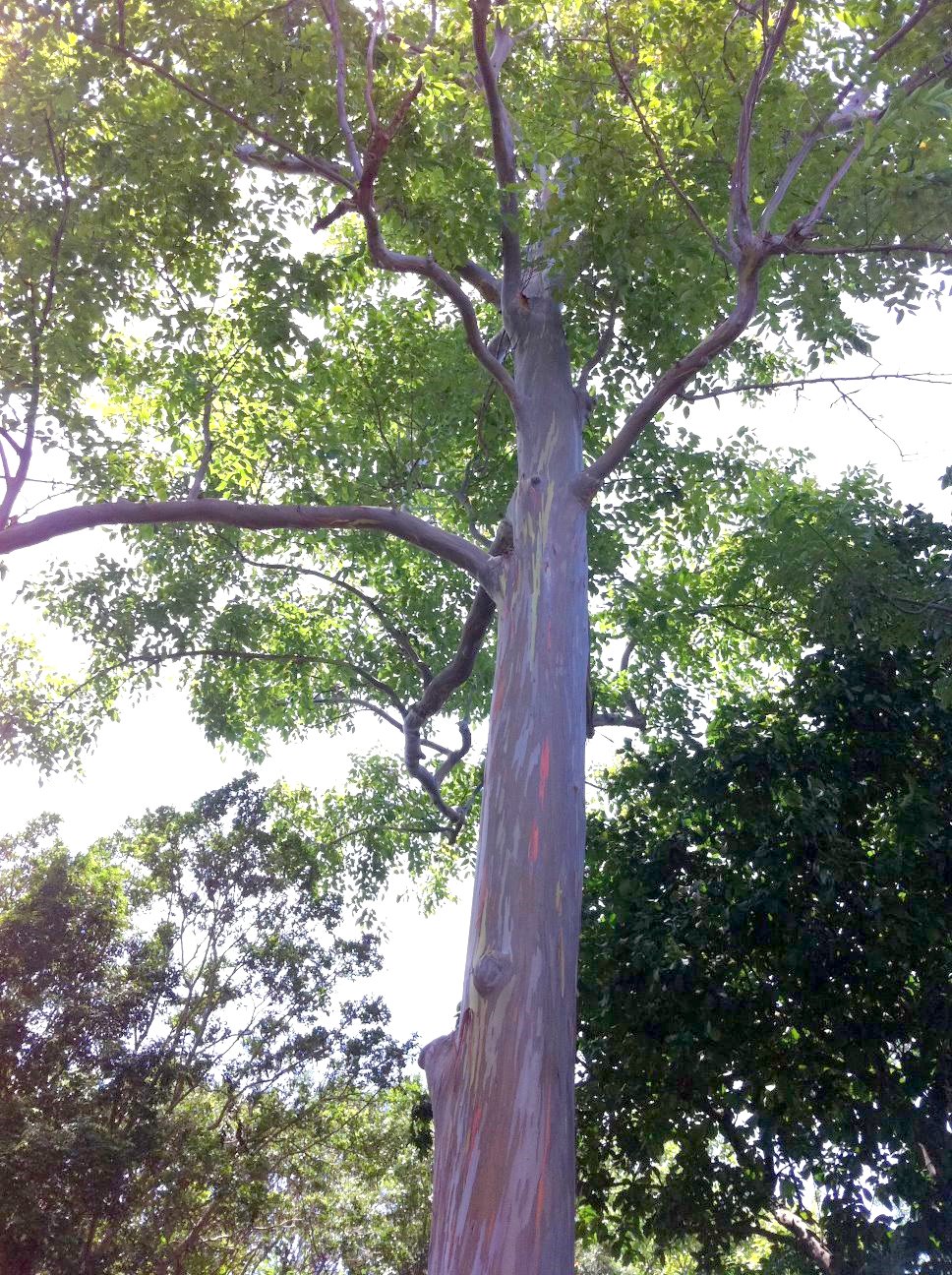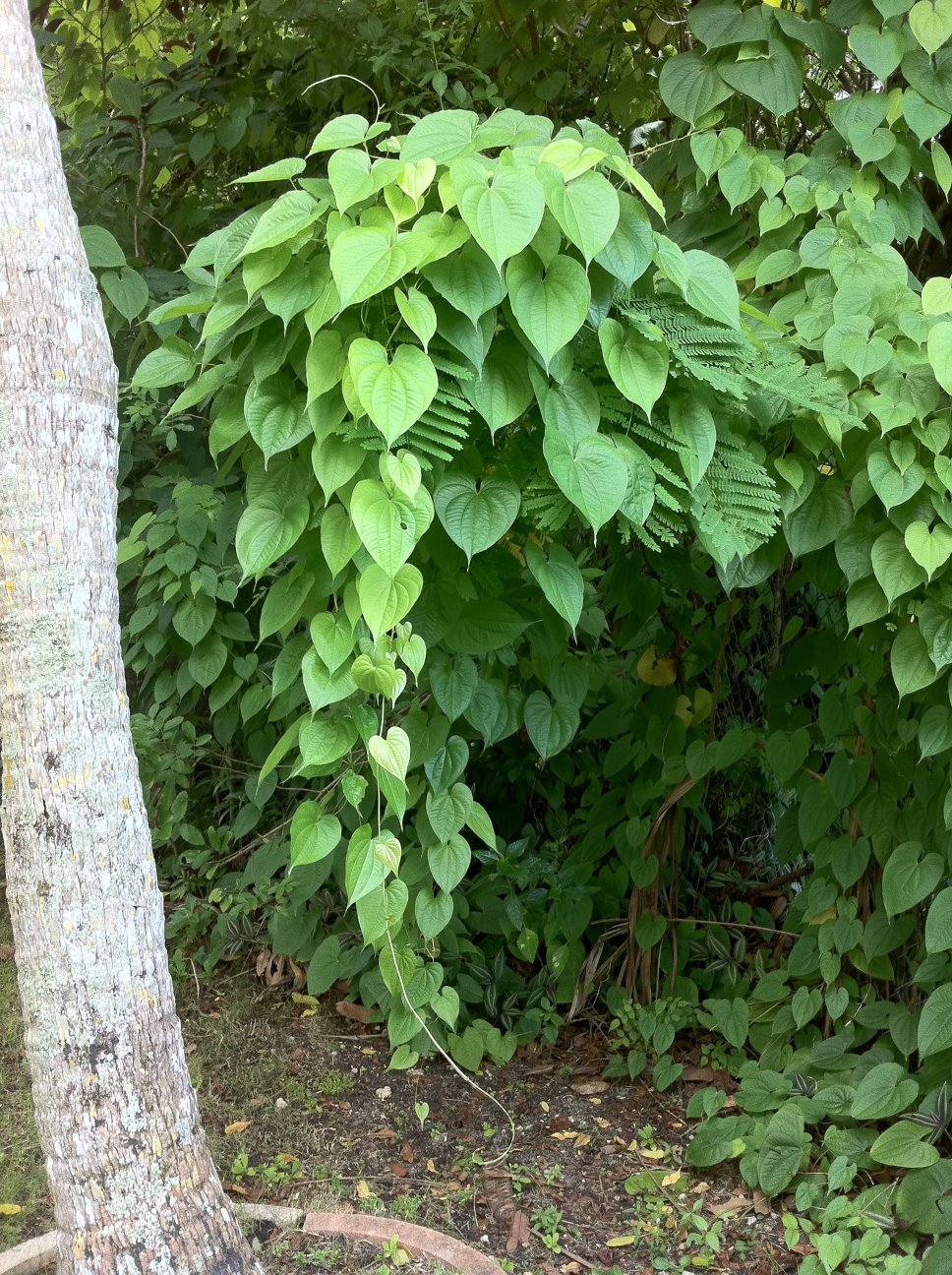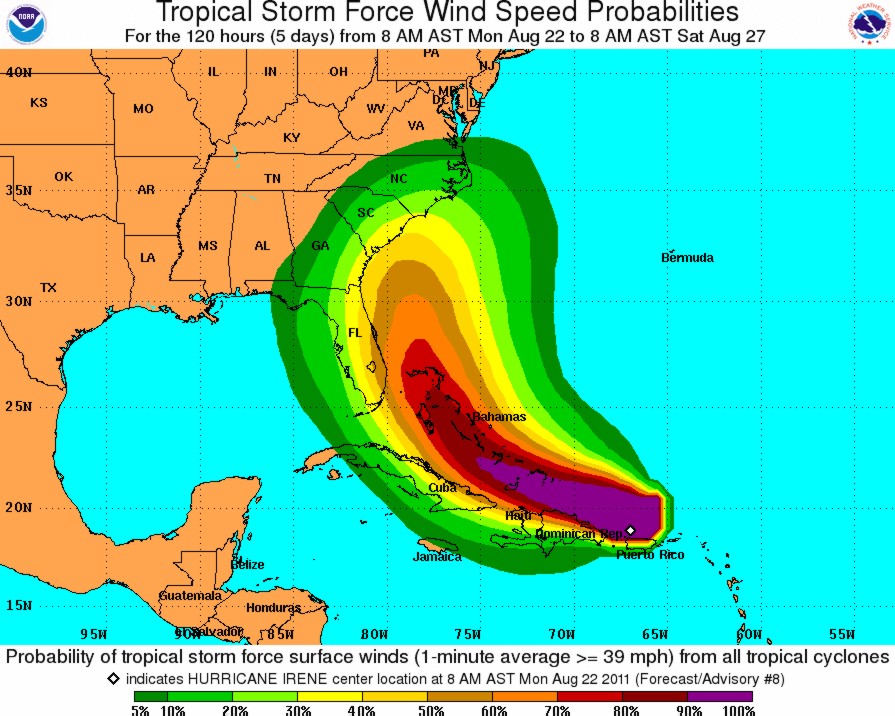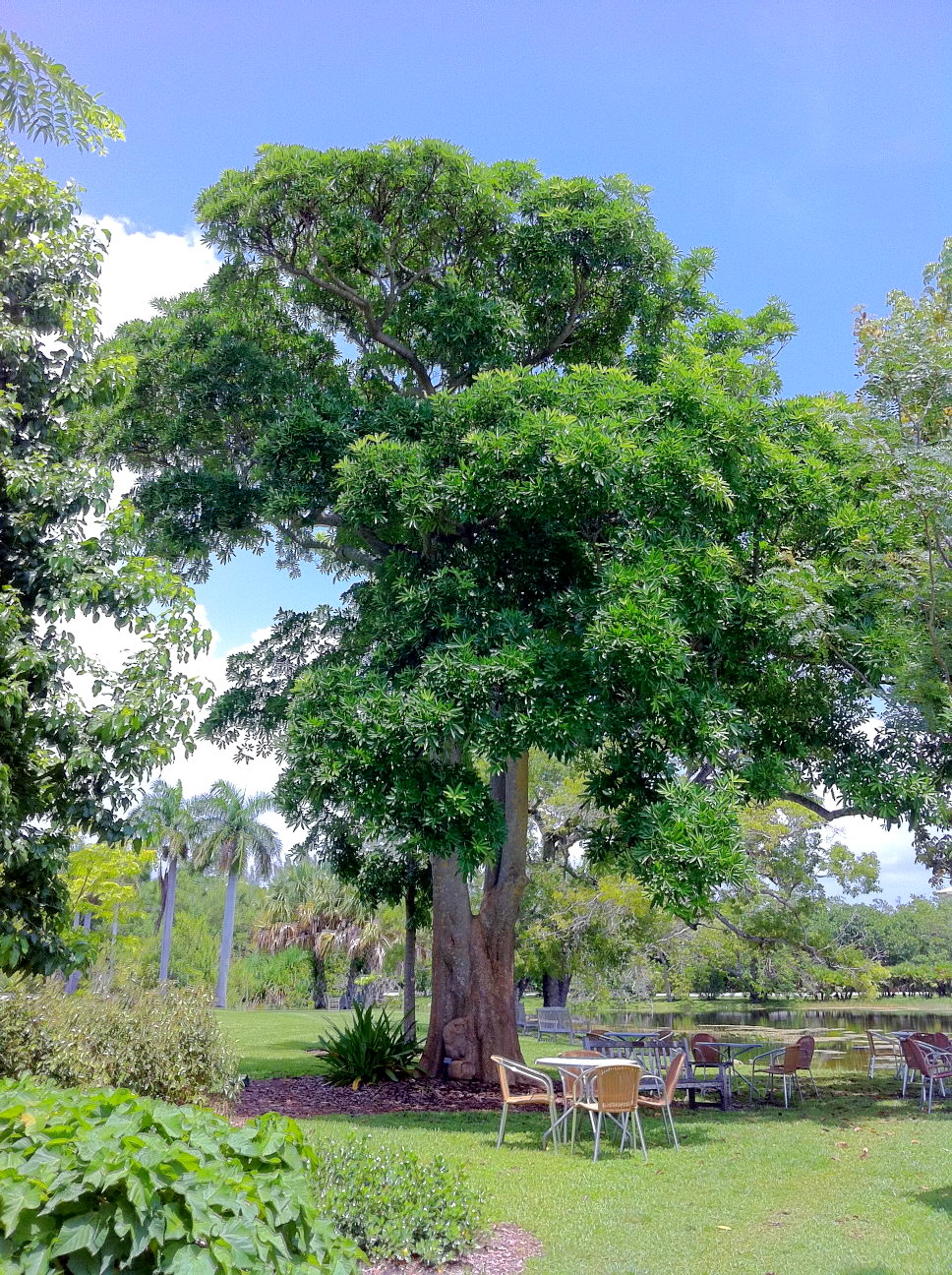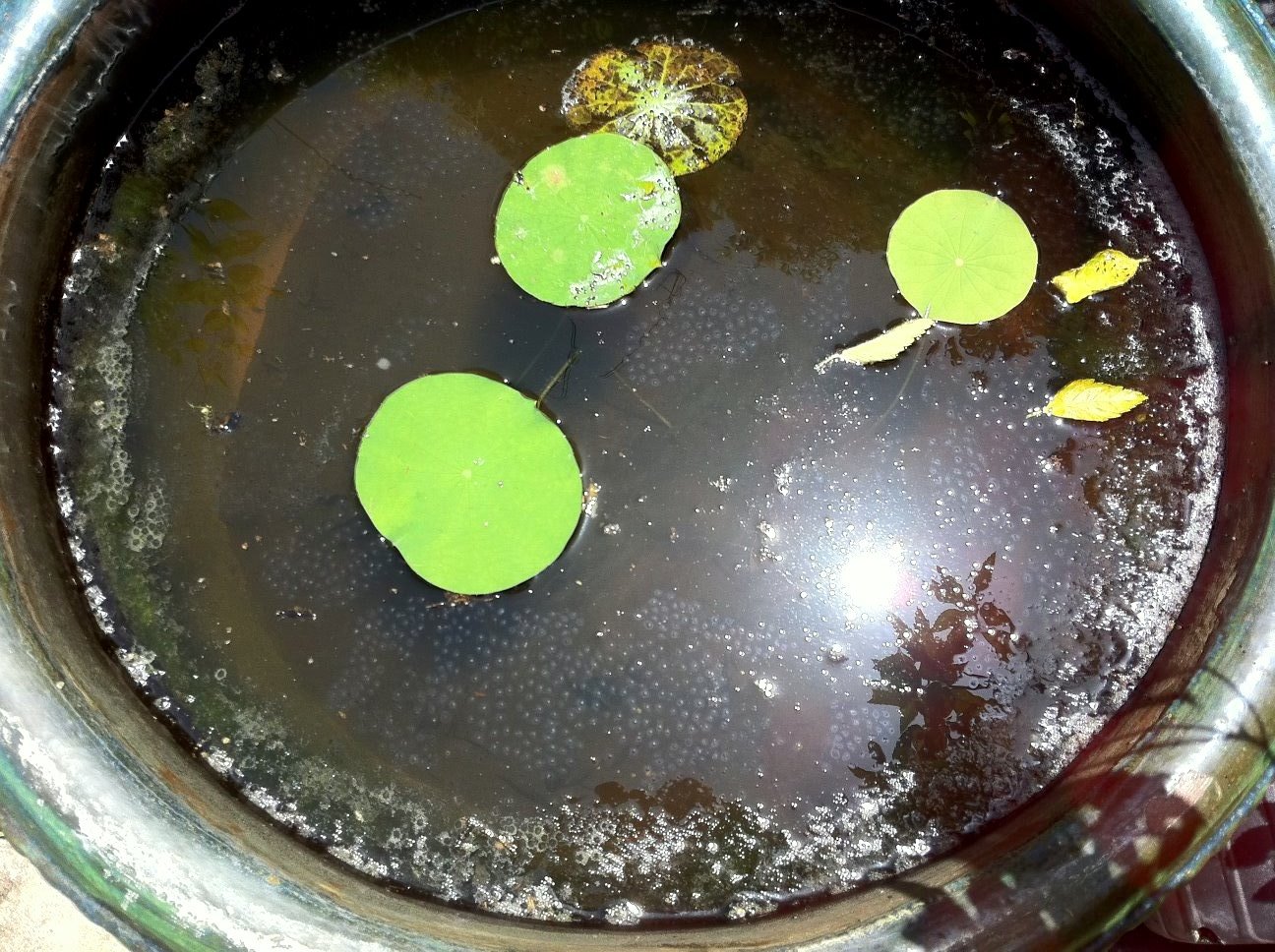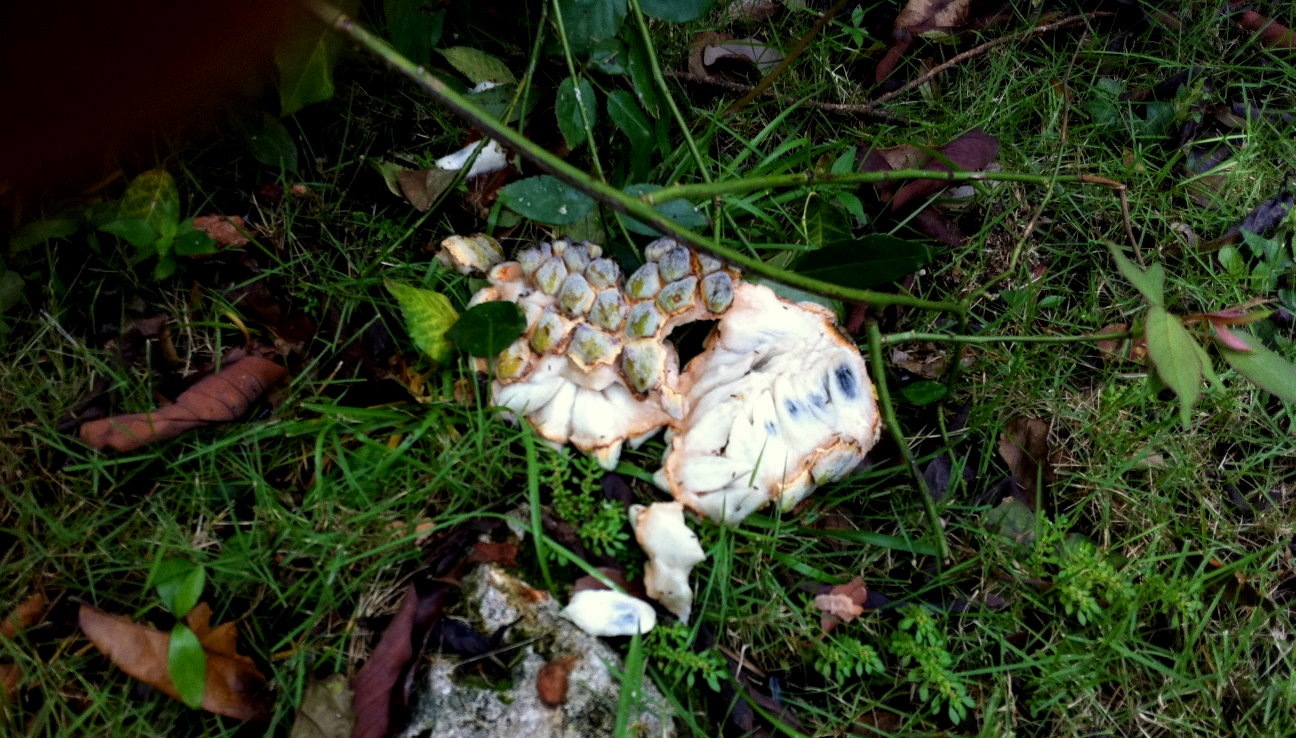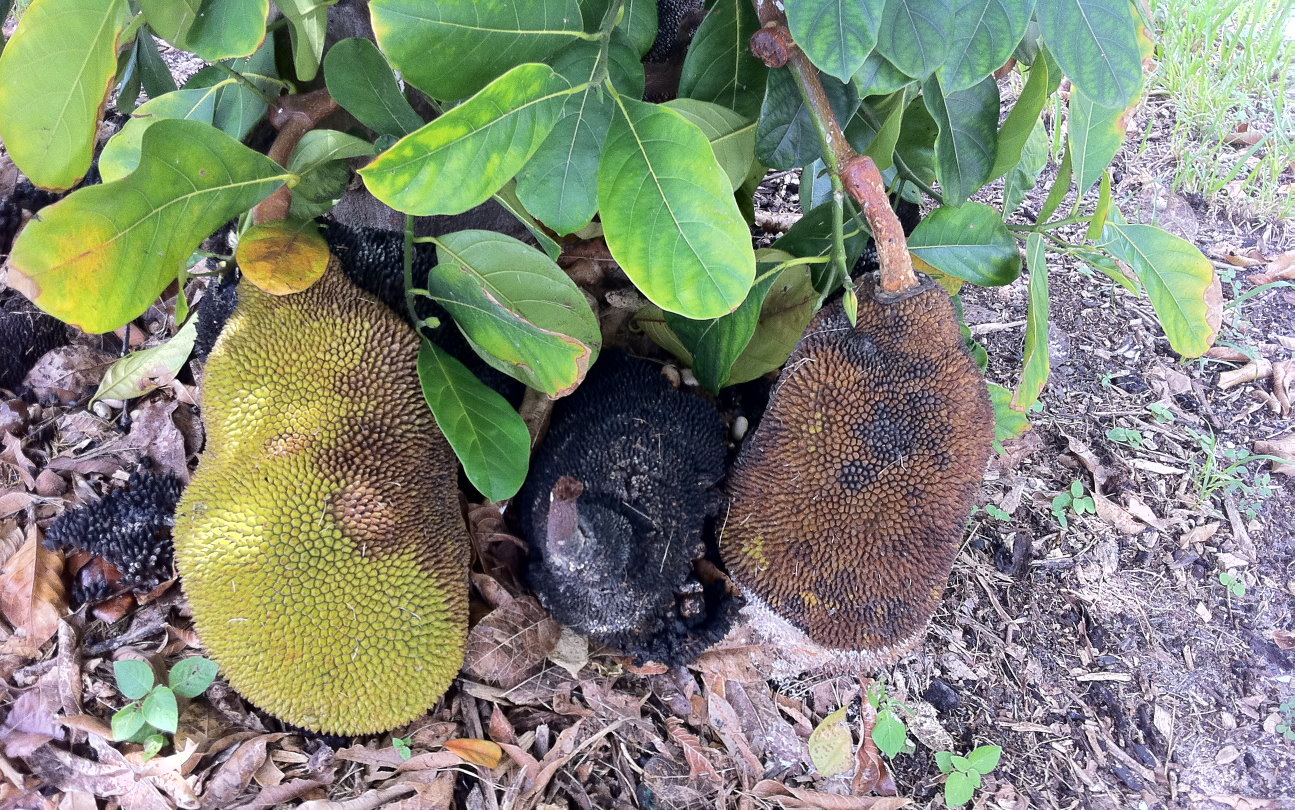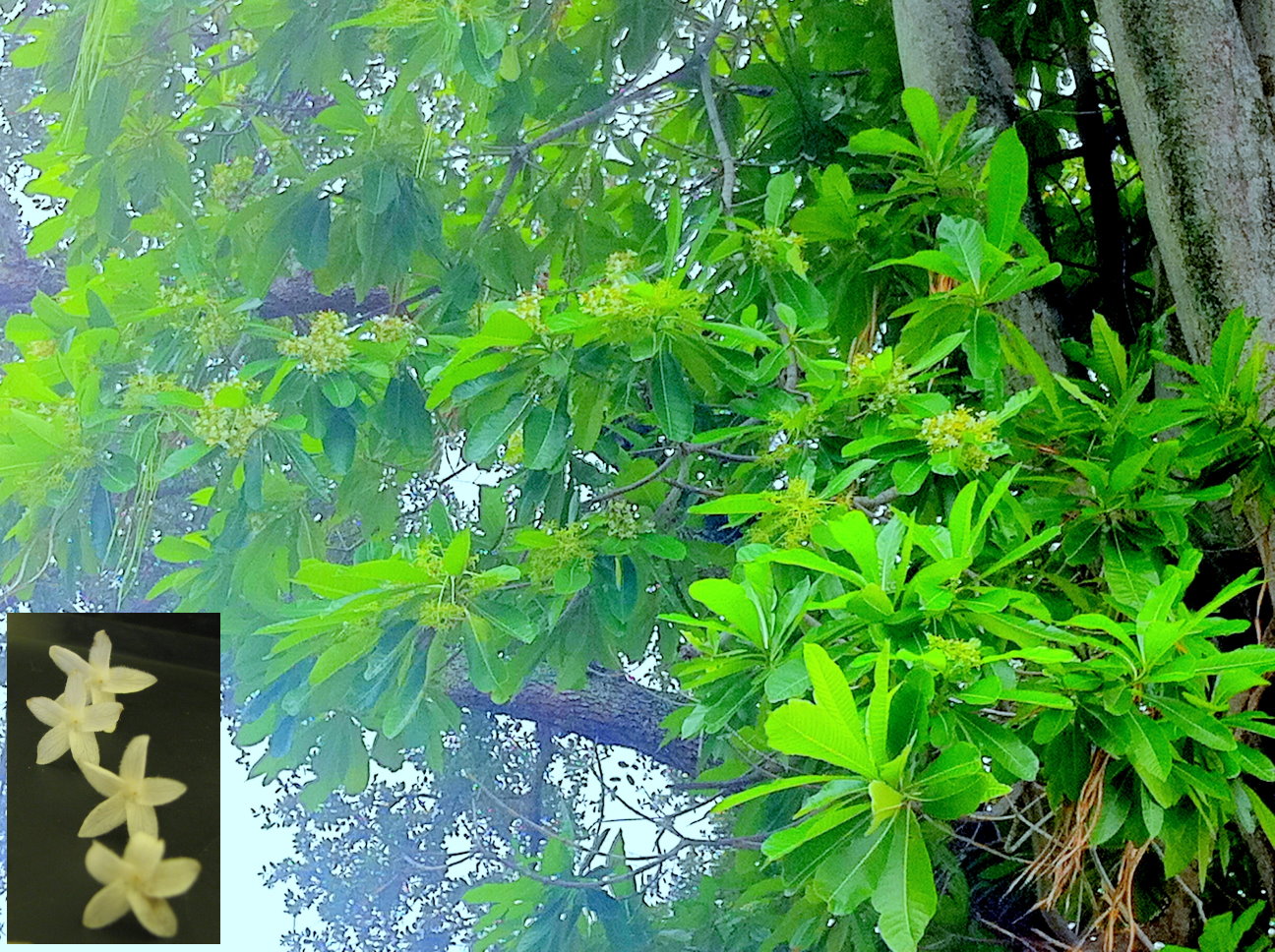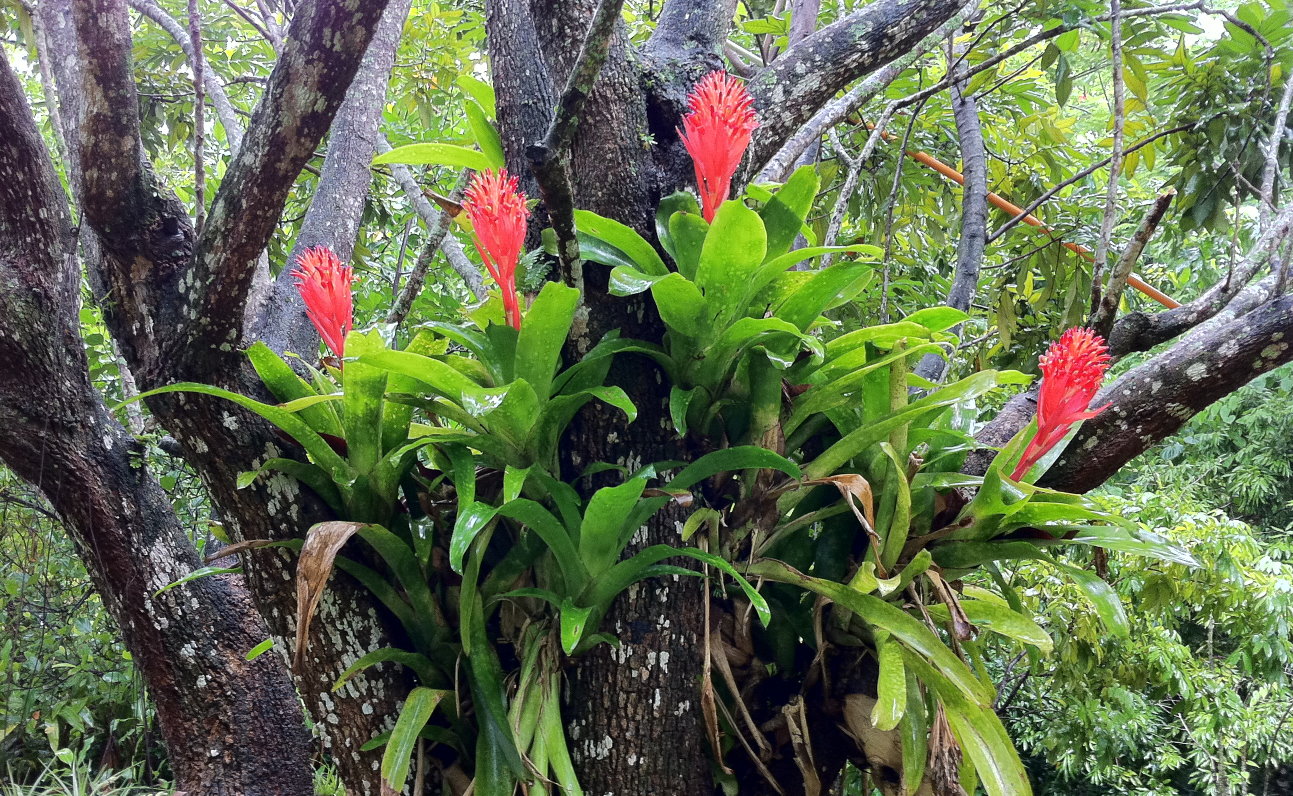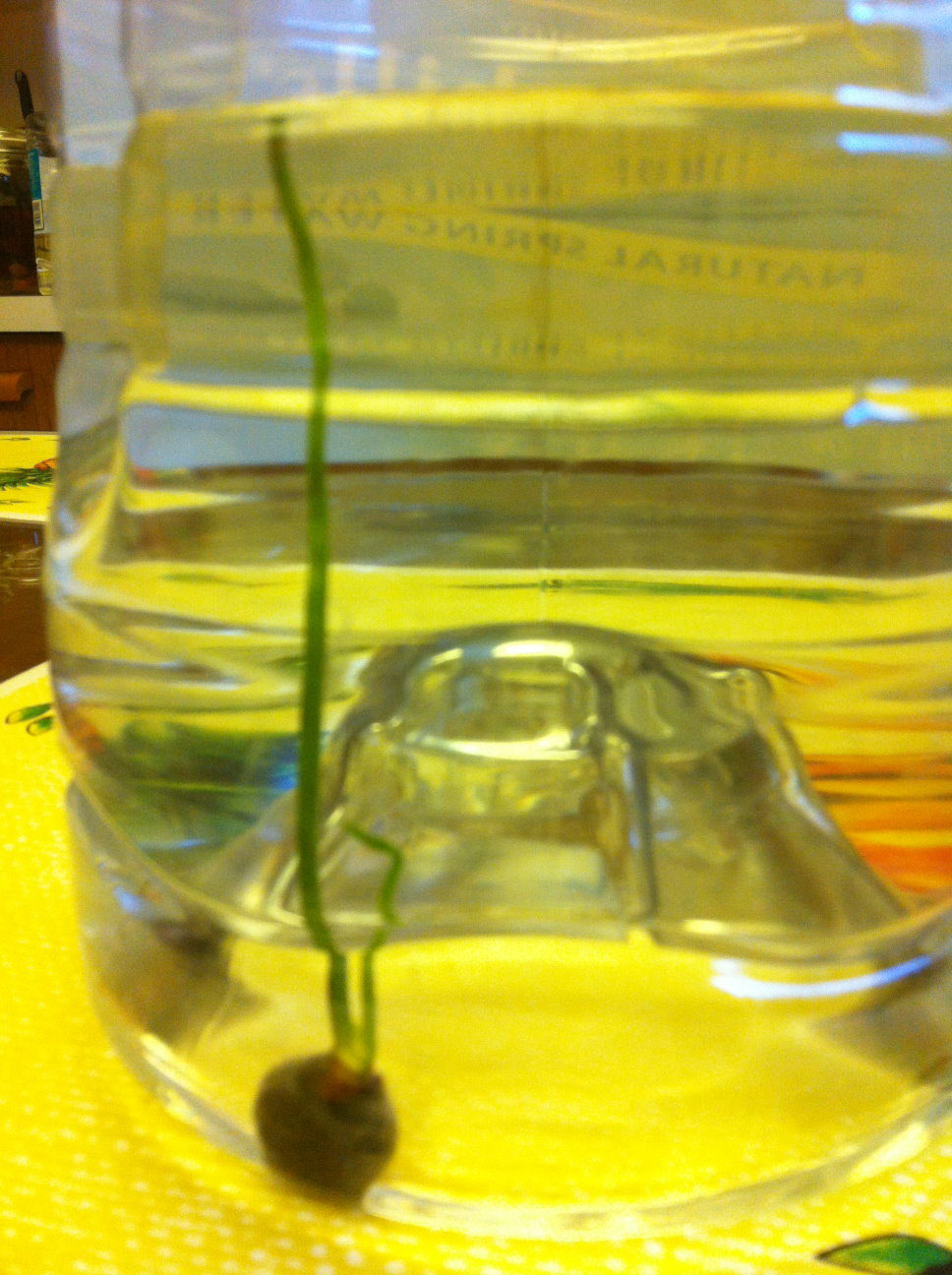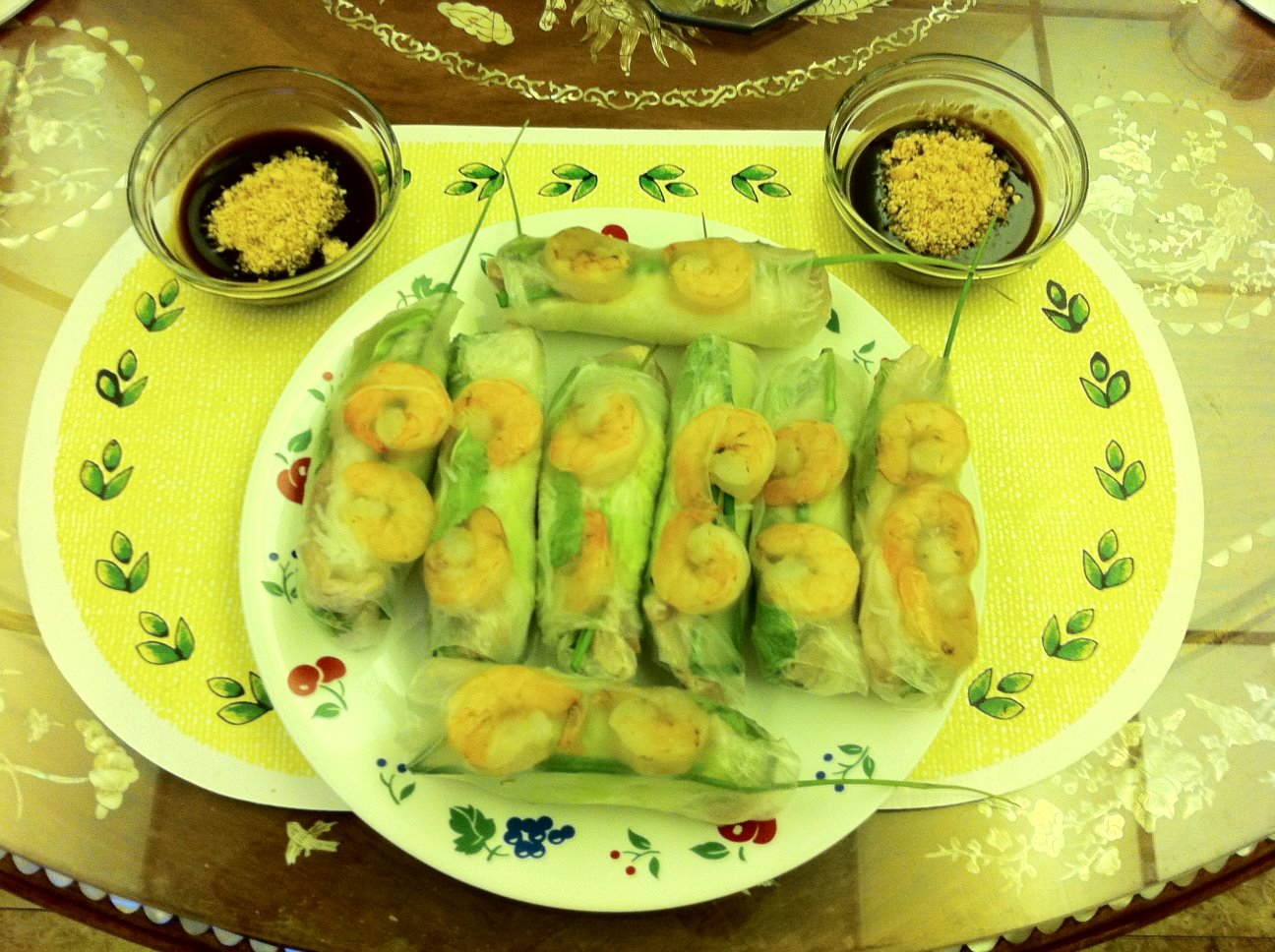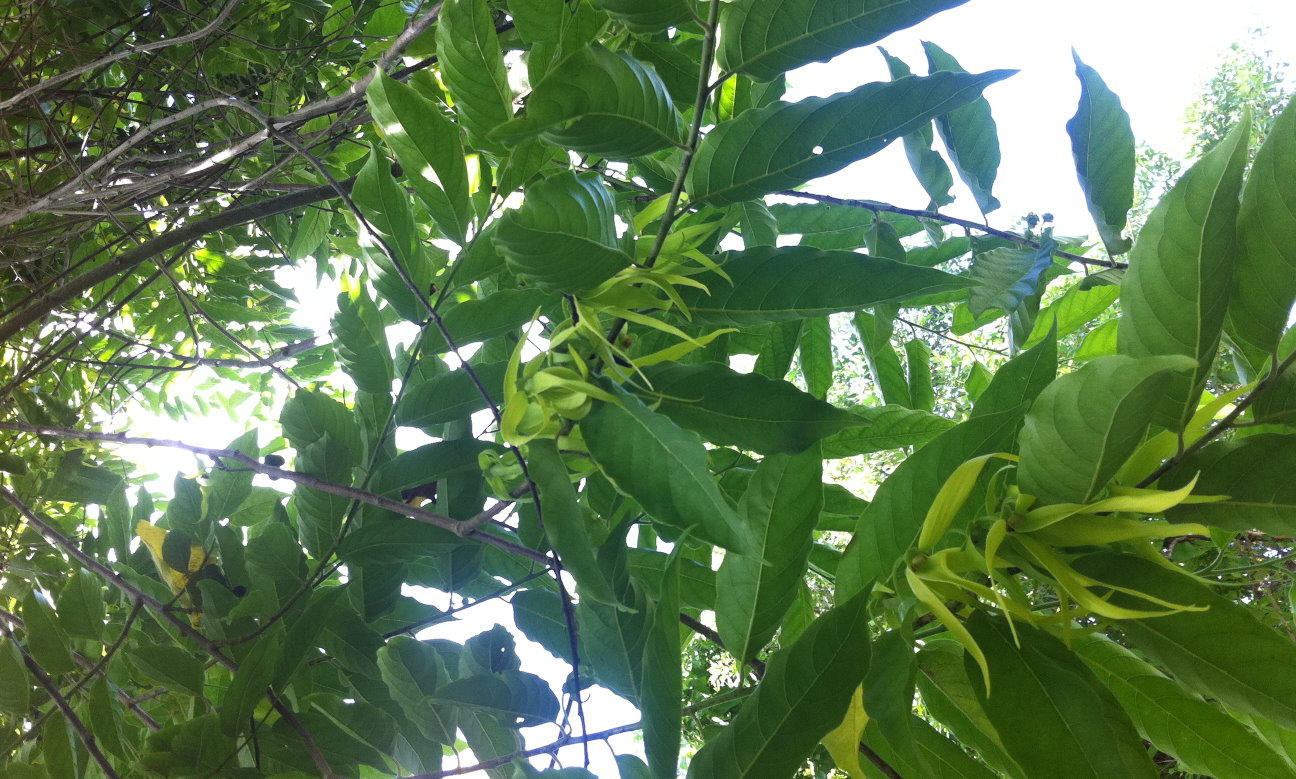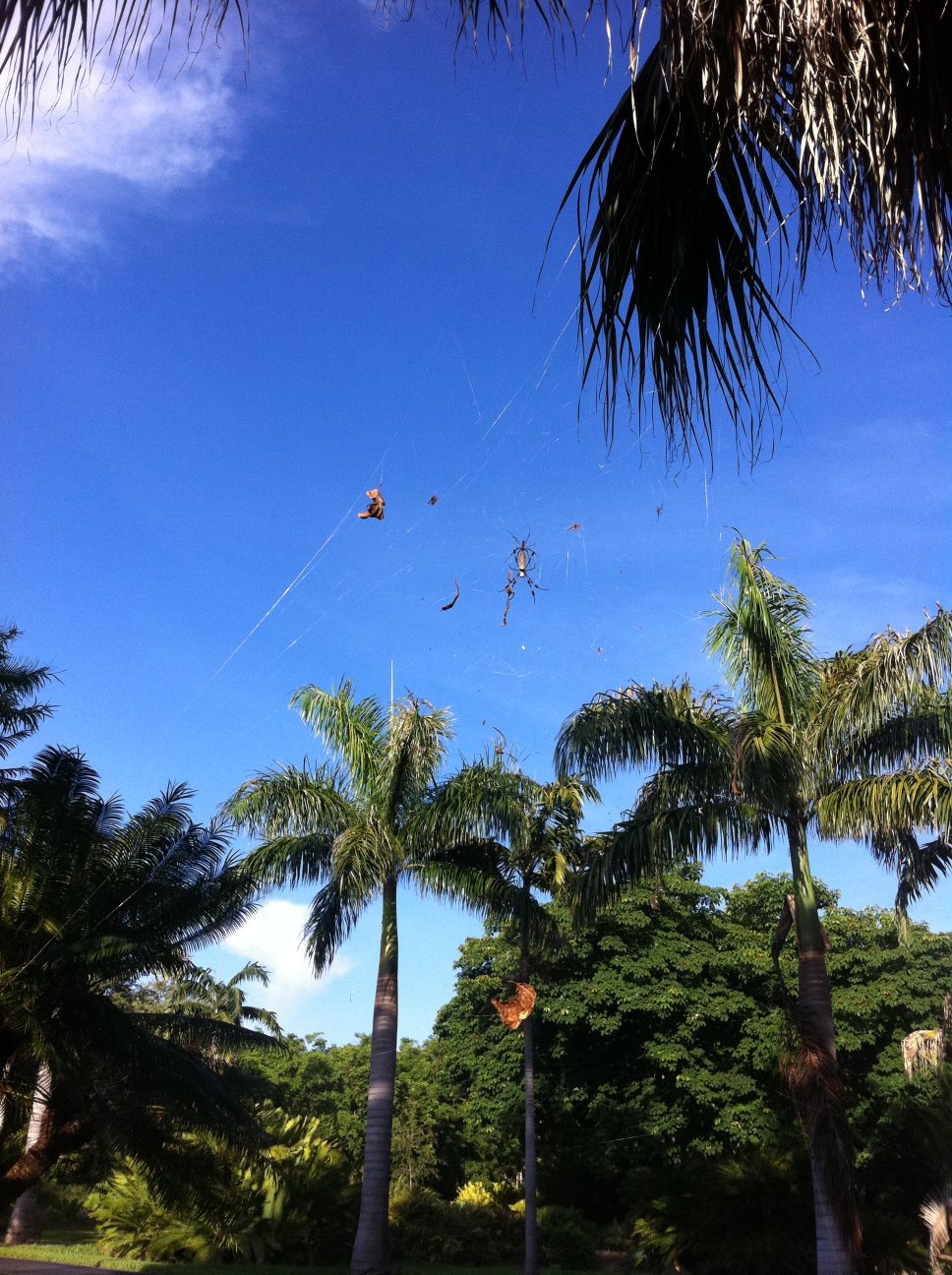It's impossible to come to Fairchild garden and only talk about one thing. Now, let's return for an encore. If you see this tree, you probably will fall in love with it, and will want to have it for yourself. This tree has a common name of Rainbow eucalyptus and it always reminds me of an artist's pallet. The color it exhibits is worthy to be among Monet's masterpieces. Meet the Eucalyptus deglupta. Actually, if you visit Fairchild, and you definitely must if you ever come to Miami, you can find a total of 6 such trees at different locations in the garden.
Eucalyptus deglupta is a tall tree, commonly known as the Rainbow Eucalyptus, the Mindanao Gum, or the Rainbow Gum. It is the only Eucalyptus species found naturally in the Northern Hemisphere. Its natural distribution spans New Britain, New Guinea, Ceram, Sulawesi and Mindanao. At the present time, this tree is cultivated widely around the world, mainly for pulpwood used in making paper. It is the dominant species used for pulpwood plantations in the Philippines. This tree is also grown for ornamental purposes, due to the showy multicolored streaks that cover the trunk. Its trunk and limbs display variegated hues of blues, browns, purples, oranges, reds, yellows and other subtle shades. The colors arise from the unique quality of its bark and the staggered timing with which it sheds. Unlike trees such as oaks, which have continually thickening layers of bark, eucalyptus trees continually shed thin layers of brown bark at randomly distributed areas on the trunk's surface, revealing the bright green inner bark underneath. Over time, as this tender bark is exposed to air, by oxidation, its color cycles through purple, blue, orange, red, yellow and other hues. The bark finally turns brown again and the cycle repeats.
